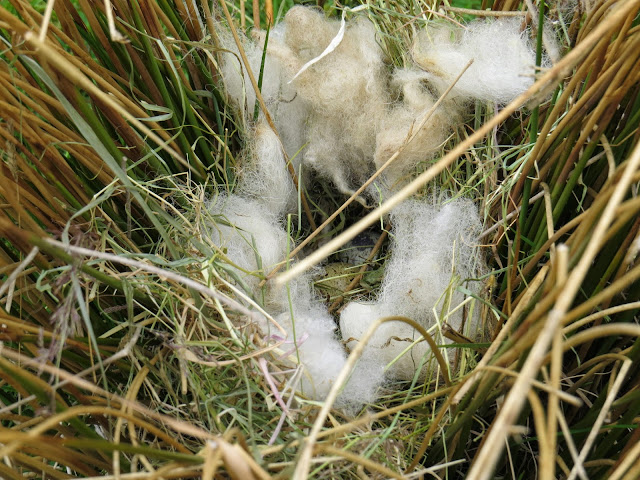Summer?
Nearing the end of May, we are still waiting hopefully for summer to arrive. The sprinkling of Roan trees on the moor have finally begun to green up after looking decidedly lifeless for many months. New life can be seen popping up all over - from the first Red Grouse broods, to broods of Lapwing and Oystercatcher, Owls and Thrushes.
Despite the cold and wet and occasionally snowy conditions Hattie and Grainne (two female Harriers hatched and tagged at Langholm moor in summer 2013) have both incubated successfully are now feeding young chicks. Diversionary feeding begins as soon as chicks hatch and both females are readily taking the food from the posts while their mates bring in an array of natural food including voles and small birds.
Hattie and Grainne are among five active harrier nests on the moor this season. After the monumental twelve breeding attempts last year it is easy to be disappointed, but five nests is still brilliant and there are a few birds about with potential to settle. With a bit of luck and a herculean effort from the keepering team here at Langholm to control the ever increasing fox numbers we could still be seeing good numbers of harriers fledge Langholm this year (I will resist the temptation to count any chickens/ harriers before they have hatched).
Check out the Langholm Moor Demonstration Project site for official updates and news.
http://www.langholmproject.com/index.html
 |
| Hattie's nest (Sonja Ludwig) |
 |
| Young volunteers receiving their well deserved John Muir Discovery Awards |
 |
| Ralph helping to ring a brood of Tawny owl chicks in a nest box |
We have been working with Langholm Academy over the last month or so introduce their S1 group to the wonders of the moor. It is a tricky time of year to explore without disturbing nesting birds but we have managed to discover a few hidden corners of the moor and learnt about moorland management and wildlife from freshwater invertebrates such as the Cased Caddis fly and Golden Ringed Dragonfly Nymph to the wonderful Whinchat, Goosander and Buzzard.
Last week the group learnt all about nesting birds; where they nest, when they nest, the materials they use to build their nests, how they keep hidden during incubation and the dangers they face. With the help of some chicken and quail eggs the group had a go at building their own nests from hay, straw, wool and bracken and learnt just how tricky it is to find the right spot and build a safe nest for their eggs.
 |
| not many nests can boast a supportive stone wall, like this one! |
Here is a fine example of one of the weird and wonderful nesting sites the group learnt about.
 |
| Oystercatcher nesting on a stone wall ( Tim Chamberlain) |
 |
| Pied wagtail nest - under a bridge but still very exposed spot |
 |
| young Song Thrush |
 |
| First owl rescue of the season - Tawny
|





















